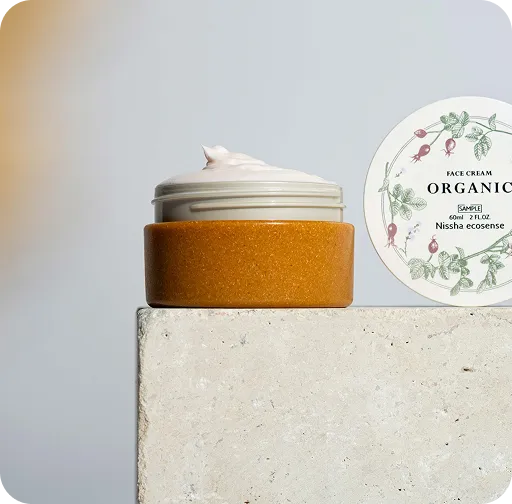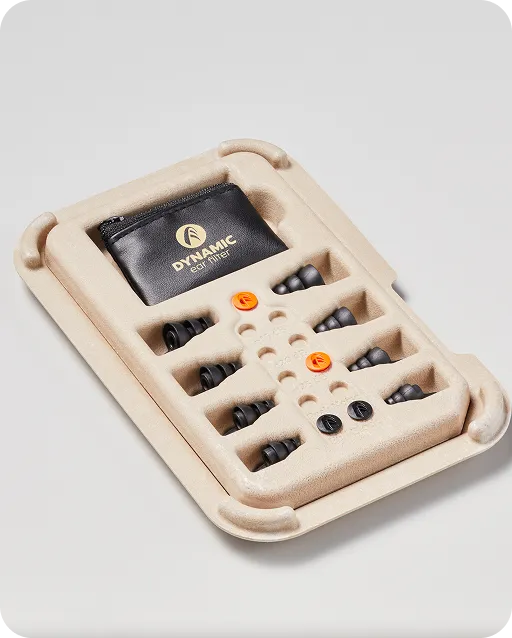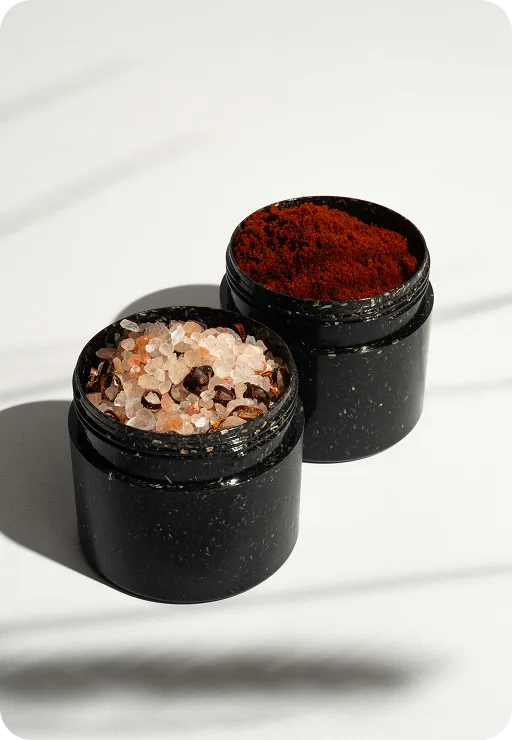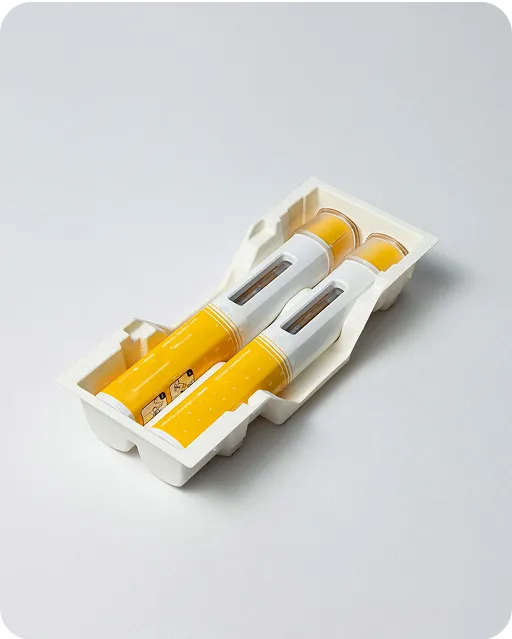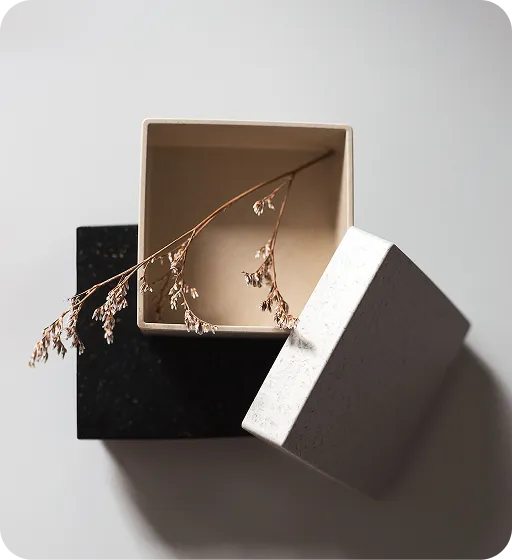Tailored Packaging Solutions, Just for You


Did you know customers are more likely to support brands that actively reduce their environmental impact?
Tailored Packaging Solutions, Just for You

Did you know customers are more likely to support brands that actively reduce their environmental impact?
In recent years, the packaging industry has undergone a major transformation, with sustainability at the forefront. And as the world shifts toward greater environmental responsibility, eco-conscious packaging has become a critical solution.
Beyond branding, sustainable packaging actively reduces pollution, cuts carbon emissions, safeguards natural habitats, and helps curb the long-term effects of climate change. This dual advantage—economic viability and ecological preservation—makes this type of packaging a win-win for businesses and the environment alike.
Green packaging is no longer just a “nice-to-have” add-on for brands. It's quickly becoming a vital part of a business strategy. Companies that embrace sustainable packaging are not only meeting regulatory demands, but they're also enhancing their brand reputation and building stronger connections with a growing base of eco-conscious consumers.
To help you navigate these future changes, we've identified the top sustainable packaging trends shaping 2025. These insights will give you a clearer picture of what's coming and equip you to build a strategy that keeps your business competitive.
Sustainability in 2025 is about coupling innovation with practicality. Businesses are not only reducing their carbon footprints—they're also aligning their values with those of eco-conscious consumers. So, let's dig into the biggest innovative packaging solutions shaping the landscape this year.
One of the most practical trends in 2025 is lightweight packaging. The idea is simple: use less material without sacrificing product protection. Lighter packages mean fewer raw materials are used, which lowers production costs and reduces transportation emissions.
Our PaperFoam® solution is a great example of this, offering a lightweight, biodegradable alternative with a specific gravity of 0.2 g/cm³ compared to commonly used plastics. It maintains product protection while minimizing environmental impact.
Plus, consumers love it, as many prefer brands that minimize excess packaging, seeing it as a sign of sustainability and efficiency. It's a small change with a big impact.

Simplicity is becoming the go-to look in packaging design. Minimalistic packaging is all about stripping away the unnecessary—no extra plastics, no excessive layers, just the essentials. This design style doesn't just look sleek, it's also more eco-friendly.
Fewer materials mean less waste, and single-material packages are much easier to recycle. It also sends a clear message: the brand values efficiency and sustainability over unnecessary excess.
Biodegradable and compostable materials are among the sustainable packaging trends quickly gaining traction, driven by consumer demand for packaging that avoids ending up in landfills. Materials like plant-based binders and papers break down naturally, offering a more sustainable alternative to petroleum-based plastic packaging. This shift not only reduces waste but also aligns with the growing trend toward eco-friendly consumer products.
One notable example is our Sulapac® solution—an innovative product that combines wood-based materials and plant-based binders to create biodegradable packaging with the durability of plastic. This product is helping lead the charge toward more sustainable packaging options that achieve both functionality and a luxurious look.
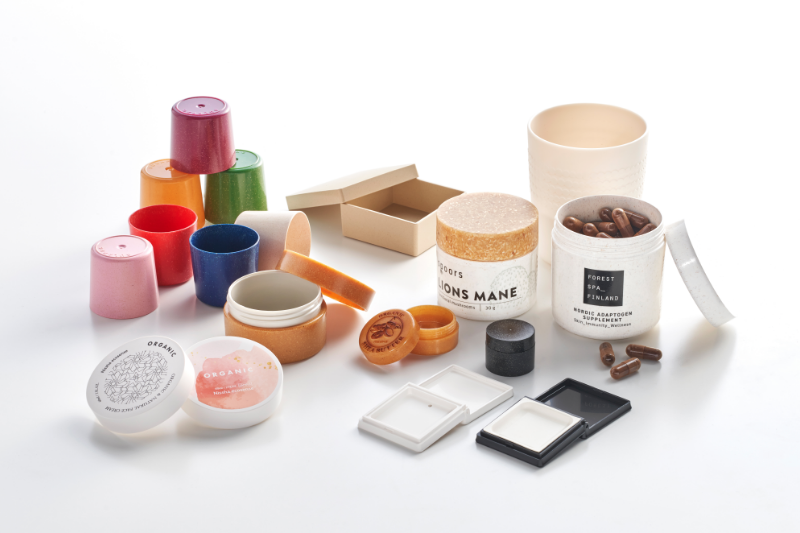
Mycelium-based packaging is an innovative and sustainable option rapidly gaining attention. Derived from fungal roots, mycelium offers a sustainable packaging alternative. It's biodegradable, home compostable in 30-90 days, fire-resistant, and water-repellent. Growing in just 7 days from agricultural waste, it's cost-competitive with foam materials.
It's not just the materials themselves that are being rethought, but the inks and adhesives used on them. Eco-friendly inks, made from renewable resources, and low-impact adhesives are helping to reduce the overall environmental footprint of packaging. These sustainable choices make packaging easier to recycle and avoid harmful chemicals that could contaminate the recycling process.
Algae-based packaging is gaining attention as a sustainable alternative to plastic. These materials are lightweight, biodegradable, and break down naturally, reducing waste in landfills. Since algae grows quickly without the need for arable land or freshwater, it offers an eco-friendly solution for single-use packaging like food wrappers and beverage containers, making it a promising choice for the future.

Companies like Canapack are leading the way in using hemp for sustainable packaging in 2025 – and we're proud to be collaborating with them on this effort! Both hemp and bamboo grow super fast, need fewer resources than traditional options, and they're biodegradable, durable, and incredibly versatile. So, whether it's food packaging or sturdy boxes, these natural materials are a renewable, eco-friendly choice that's perfect for anyone wanting more sustainable options.
More and more companies are turning to recycled materials for their packaging. So, it's no surprise that one of the most prevalent sustainable packaging trends in 2025 is the incorporation of recycled and upcycled waste materials into packaging solutions. This trend not only reduces dependency on virgin resources but also saves millions of tons of waste from ending up in landfills.
Key Examples in Action:
This shift promotes a circular economy, where resources are reused rather than wasted. Not only does this help the environment, but it also meets consumer expectations for green products and presents a cost-saving opportunity as businesses reduce the need for raw material sourcing.
Eco-friendly packaging isn't just about the materials—it's also about the process. Using renewable energy sources like solar and wind power to manufacture packaging is shaping up to be a non-negotiable sustainable packaging trend in 2025.
Since 2024, our German factory has been operating with a 100% green energy contract for sustainable packaging production, using a mix of wind and water power. The GHG emission factor ranges from approximately 3g CO2eq/kWh for hydropower to around 10-17g CO2eq/kWh for onshore and offshore wind power.
With this fact in mind, the energy mix used in our factory contributes significantly to the total GHG emissions associated with our mass-production process.

Why This Matters:
As eco-packaging continues to evolve, emerging technologies are playing a pivotal role in shaping the future of the industry. Innovations in materials, production processes, and digital tools are not only making packaging more eco-friendly but also more efficient and scalable. Let's explore some of the most exciting sustainable packaging trends in technology.
AI helps streamline schedules, predict material needs, and cut down on waste, while robots take care of tasks like palletizing, quality checks, and pick-and-place jobs. Together, they speed up production, boost consistency, and make things more sustainable by using fewer resources and less energy.
Digital printing innovations, like 3D printing, make it easy for brands to create custom, lightweight designs while cutting down on material waste. It's all about using precise additive processes, which are perfect for making eco-friendly packaging prototypes or small batches. Plus, you can even use biodegradable or recycled materials in 3D printers, making it an even greener option!

Automated optimization systems take the guesswork out of packaging design. Using smart algorithms, they create packaging that uses less material but still gets the job done. These systems consider things like product size, weight, and fragility to come up with packaging that’s both practical and eco-friendly. The result? Lower costs for businesses and a smaller environmental footprint.
Blockchain is changing the game for sustainable packaging. It creates a tamper-proof, traceable record of every step in the production and distribution process. This means businesses can easily ensure ethical sourcing, confirm where materials come from, and show customers they're serious about sustainability. It also makes audits and meeting eco-friendly regulations a whole lot easier.
The Internet of Things (IoT) is transforming packaging design by enabling smart and connected solutions. IoT-enabled packaging can monitor product conditions, track shipments, and even give consumers real-time updates. Plus, by boosting efficiency and improving packaging lifecycle management, this tech helps cut down on waste across the supply chain.
Zero-waste production is all about making sure nothing goes to waste in the packaging process. Every part is either reused, recycled, or composted. With the help of advanced tech, these methods cut down on material loss, repurpose leftovers, and create packaging that's either fully recyclable or biodegradable.
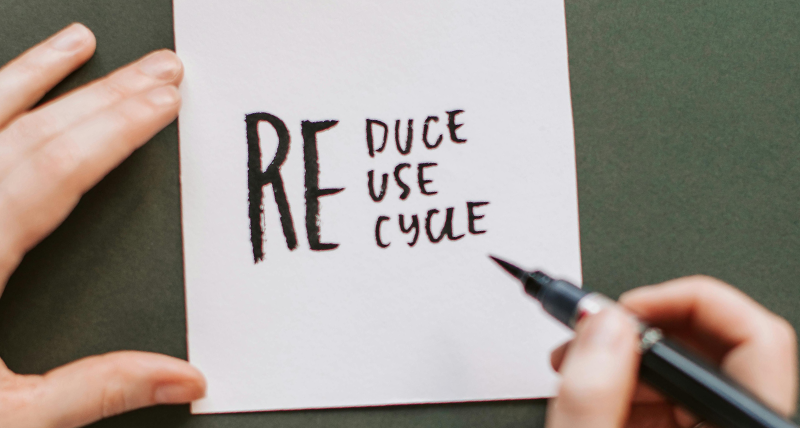
Innovative packaging solutions, like pulp and paper packaging, are making big strides in the world of sustainable packaging. These materials are naturally biodegradable, recyclable, and widely accepted in recycling programs, making them a great choice for eco-conscious brands.
What's even more exciting is that recent innovations in pulp technology have made it possible to create packaging that's not only stronger but also lighter and more sustainable than ever before.
New techniques are also making paper packaging even more eco-friendly. For example, water-based coatings and plant-based adhesives are replacing harmful chemicals that were once commonly used.
Plus, some companies are tapping into agricultural waste fibers, like wheat straw and rice husks, to create pulp. This cuts down on the need for virgin wood, which helps conserve forests.
Our Pulp-Injection technology takes this concept even further by offering a versatile, sustainable solution that combines freedom of product design with minimal environmental impact. This makes it perfect for brands looking to align with modern consumer values.
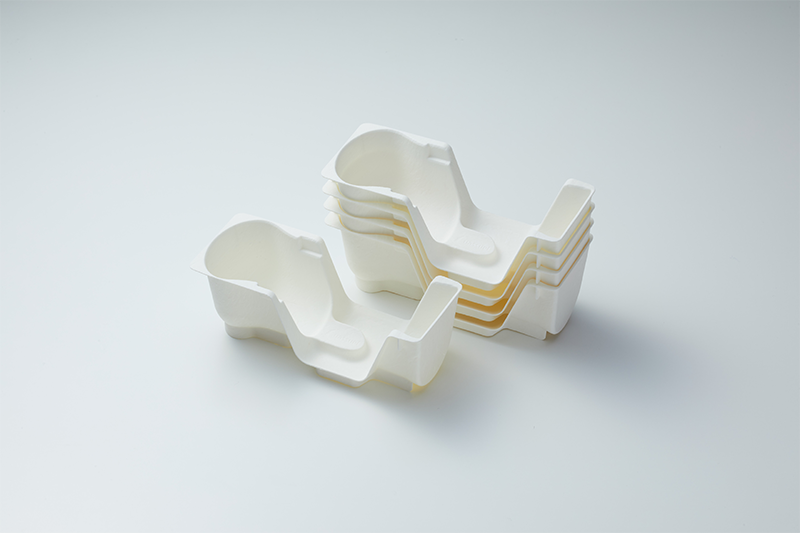
Consumers today care more and more about the environmental impact of their purchases, and it's shaping their purchasing choices. Many are now actively looking for brands with eco-friendly packaging, and are even willing to pay a little extra for products that align with their values.
With younger generations especially focused on sustainability, brands that prioritize it are connecting better with customers and gaining an edge.
Sustainability isn't just a trend anymore, it's a key factor in consumers' buying decisions.
Regional Differ
Europe is definitely leading in terms of sustainable packaging adoption. With stricter regulations around packaging waste represented by PPWR, especially through the EU's Circular Economy Action Plan, companies in Europe are heavily investing in recyclable, reusable, and compostable packaging.
European consumers are also highly eco-conscious, demanding packaging that fits their sustainability values. As a result, many European brands are innovating with plant-based binders, paper alternatives, and more, making sustainability a priority across the region.
In North America, both consumer demand and regulations are pushing brands to go green with their packaging.
Companies in the U.S. and Canada are increasingly opting for recyclable, biodegradable, and compostable materials, especially in response to consumer expectations and new government regulations aimed at reducing plastic waste.
Big retail brands and food service chains are leading the way, driving the shift toward more sustainable packaging solutions.
In the Asia-Pacific region, there's growing demand for sustainable packaging, particularly in countries like Japan, South Korea, and Australia. However, challenges like limited recycling infrastructure and heavy reliance on single-use plastics still exist.
Despite these obstacles, brands are pushing toward greener packaging options, especially in industries like electronics and food. Companies are exploring biodegradable alternatives and investing in recycling technologies to meet the growing environmental expectations of both local and global consumers.
While the shift toward sustainable packaging is a positive step, it comes with its own set of challenges.
One major hurdle is the cost—sustainable materials and processes often come at a premium, which can be especially difficult for smaller businesses with limited budgets. This financial barrier can slow down the adoption of eco-friendly packaging, even for companies that are committed to sustainability.
Additionally, there's the challenge of ensuring that packaging remains effective in protecting products while also being environmentally responsible. Some materials that are sustainable may not offer the same durability as traditional options, which can be a concern for brands in industries like electronics or food.
Despite these challenges, the overall trend is clear: businesses are increasingly working toward finding cost-effective and scalable solutions that meet both consumer expectations and environmental goals.
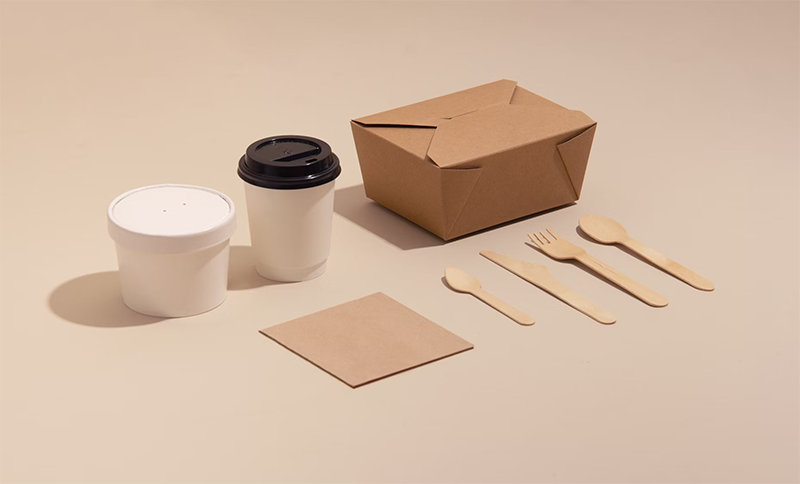
The success of sustainable packaging really comes down to having the right waste management systems in place. For compostable and biodegradable packaging to work as intended, we need to step up and improve how we collect and process waste on a global scale.
Steps Forward:
Sustainable packaging is on track to become the norm within the next 5 to 10 years, with fully recyclable, compostable, and reusable materials leading the way. As recycling and composting systems continue to improve, we can expect a significant reduction in plastic waste.
At the same time, consumers are raising the bar, demanding not only greener options but also clear guidance on how to dispose of packaging responsibly. This push for transparency is reshaping how brands approach their packaging strategies.
Some of the most exciting sustainable packaging future trends include materials made from mycelium and algae, offering innovative alternatives to traditional plastics. Innovative packaging solutions is also gaining traction, making the entire experience more interactive and engaging for consumers.
The next decade is all about striking a balance between sustainability and functionality, creating packaging solutions that support a circular economy and drive positive change for both businesses and the planet.

Governments around the world are tightening regulations to cut down on plastic waste and encourage more sustainable practices.
For example, the European Union has been leading the charge by introducing bans on single-use plastics, pushing companies to find greener alternatives. Meanwhile, Spain is taking it a step further by requiring businesses to take responsibility for the packaging they produce, both locally and abroad, starting in 2025.
To support this transition, companies like Ecoembes are helping businesses navigate these new laws, offering solutions from eco-design to compliance advice. These kinds of regulations are a driving force, making it easier for companies to adopt more sustainable practices.
While regulations set the rules, collaboration within the industry accelerates innovation. Companies are teaming up to share knowledge, resources, and new technologies that make it easier to develop and use eco-friendly packaging.
Take Amazon, for example. They've already swapped out single-use plastics for recyclable materials like paper and cardboard, and they're sharing these packaging innovations with other companies to help them meet their sustainability goals.
When industries collaborate, they can bring about faster, more impactful changes, and the packaging sector is no different.
With governments pushing for change and companies working together, the packaging industry is on a fast track to greener practices. New regulations are pushing brands to think outside the box, while collaboration ensures that there are practical solutions to make sustainable packaging the norm.
In 2025, we'll see even more of these efforts come to life, from better packaging materials to more efficient production processes. The combination of these efforts is setting the stage for a more sustainable future in packaging.
Businesses in 2025 have a clear choice to make—adapt to sustainable packaging trends or risk falling behind in a market where eco-innovation is no longer optional. Whether exploring recyclable packaging materials, upcycled waste materials, implementing renewable energy practices, or investing in compostable plastic alternatives, the future is green, and it's here now.
Implementing these trends isn't just about meeting regulations—it's about building trust, staying relevant, and providing future-proof solutions. Companies that integrate sustainability into their core strategies will be best positioned to thrive in a highly competitive market.
For those ready to take the leap, the opportunities are endless. The question now is no longer "Why sustainable packaging?" but "Why not?"

We here at Nissha will support you every step of the way!

